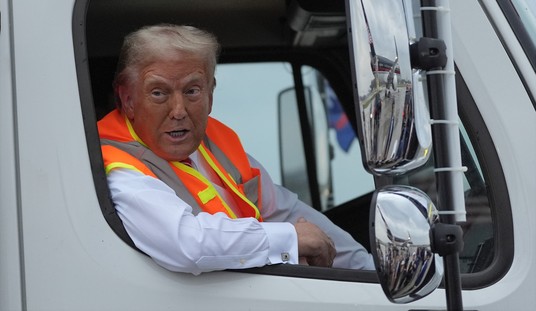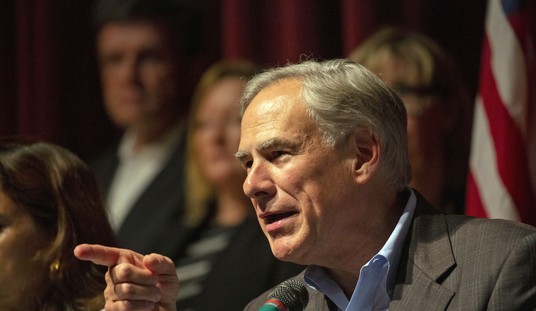If the premise behind this article kind of sounds familiar to you, you are not alone, because it feels like the opening scene of a late-'90s thriller.
A transport truck carrying rhesus monkeys overturns on a Mississippi highway, shrouded in fog; cages burst open, and one panicked primate disappears into the local woods.
If this situation occurred in front of a camera, then we'd cue the sirens, flashing lights (but only after we warned people with light sensitivity), and a CDC convoy rolling behind a weary Dustin Hoffman and a frantic Renée Russo.
The only problem? It's not Hollywood; it's Jasper County, Mississippi, and one monkey is still missing.
When Fiction Starts Looking Familiar
In the movie Outbreak, a single monkey, infected and smuggled from Zaire, exposes a small California town to a deadly virus.
Back then, producers mixed science fiction with Cold War anxiety. Today, it's a reality.
According to the Jasper County Sheriff's Office, don't pet the monkey:
A truck carrying rhesus monkeys was involved in a wreck on Interstate 59 on Tuesday afternoon, according to a Facebook post from the Jasper County sheriff’s department.
The monkeys, which came from Tulane University in New Orleans, Louisiana, were infected with several viruses, including hepatitis C and COVID-19, according to the department, thus posing a potential health risk to humans.
“The monkeys are approximately 40lbs, they are aggressive to humans, and they require [personal protective equipment] to handle,” read the department’s social media post.
I believe that if PPE is required when handling an animal, then warning people not to approach the critter is probably a good idea. Tulane University, however, quickly disputed the sheriff's office description.
However, a Tulane representative shared a different statement about the monkeys, WTVA reported. “Non-human primates at the Tulane National Biomedical Research Center are provided to other research organizations to advance scientific discovery,” said Tulane spokesperson Andrew Yawn.
“The primates in question belong to another entity and are not infectious. We are actively collaborating with local authorities and will send a team of animal care experts to assist as needed.”
Two approaches to the same coin. It's the kind of split-screen storytelling that feels uncomfortably familiar; we've lived through this movie before.
In the movie, the government tried to downplay something they couldn't contain. This time, the real-life version stars public relations departments instead of generals.
The Scene on the Ground
The crash occurred on Interstate 59 near Heidelberg. Reportedly, the truck's trailer held more than 20 monkeys, but how many escaped or were destroyed is something authorities won't confirm.
One monkey is at large, state officials say they're using traps and tranquilizers to catch the animal responsible for eerie shrieks at night in the pine trees.
It's an absurd situation, one in which real life so closely resembles a 30-year movie in which a potentially diseased primate is running wild through rural Mississippi.
This is a breakdown in a system that's supposed to keep experimental animals locked, logged, and safe—not allow a zoo escape.
Transporting biomedical equipment and subjects isn't the most glamorous job, but it's deadly serious.
This is a potentially dangerous situation. Hopefully, by the time you read this column, the monkey will have been taken care of.
All this information begs one question: Why is the public learning about this accident through social media posts instead of a press briefing?
The Accountability Question
Behind every accident is a story of corners cut or oversight flat-out missed. Somebody approved the transport; they knew where those monkeys were coming from and where they were going. And someone decided not to clarify the infection status before public panic set in.
You'd think "they" would know by now that we can handle risk, but we can't handle deception. Mississippi residents deserve the straight truth:
- Are these monkeys dangerous?
- Was the driver properly trained?
- Were containment protocols followed?
Given everything the public has endured over the past several years, the least government agencies could do is earn back a little trust.
A Reminder of Fragile Control
It's not hyperbole to compare this situation to the movie Outbreak: one overturned truck, a moment of human error, and any illusion of control vanishes.
For all our technological confidence, we smugly forget that nature doesn't take orders. Or put another way, man plans while God laughs.
A frightened monkey doesn't read or care about containment manuals.
There is a lone rhesus monkey somewhere in the dense Mississippi underbrush, reminding America that the line between lab and wilderness is much thinner than we'd like to believe—something akin to the claim that a virus could escape a Chinese lab.
But the true danger? The one that nobody will admit? It's the arrogance of believing we've mastered what we barely understand.
Final Thoughts
Our digital age is one where the extraordinary barely surprises us: UFO hearings, escaped lab animals, government contradictions: all part of the daily scroll.
Yet a sobering truth lies beneath all the memes and headlines: civilization depends on people performing their jobs correctly.
When those people don't, chaos doesn't need an army. Sometimes, it just needs one monkey.
If you’re tired of watching media play defense for every institutional failure, you’re in the right place. PJ Media writers cut through the noise and ask the questions legacy outlets won’t touch.
Help us expose the truth—sign up with promo code POTUS47 for 74% off your VIP membership.










Join the conversation as a VIP Member